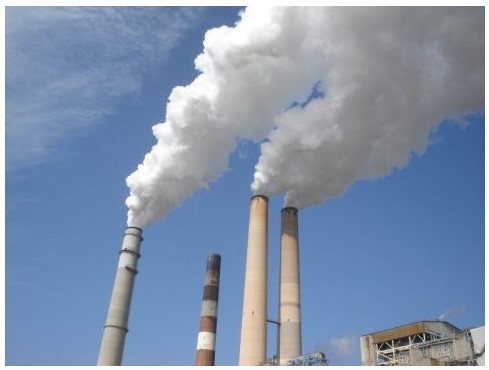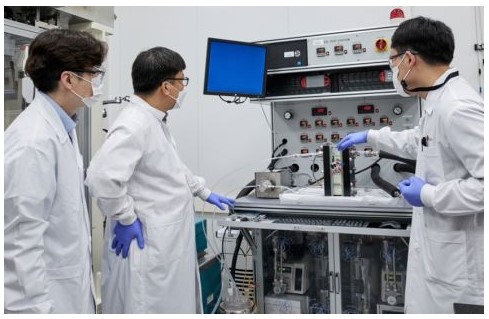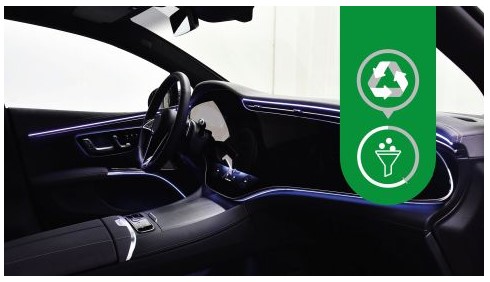Bold steps towards full carbon neutrality and circular economy
main text
Bold steps towards full carbon neutrality and circular economy
Carbon neutrality and circular economy requirements are challenging the global plastics and rubber industries. In response, the industries hunt for new CO2 recycling processes and expand applications of recycled materials to further contribute to a greener planet, which yield significant progress.
Many scientists and researchers are looking to capture and utilize the carbon dioxide (CO2) that remains abundant in the atmosphere and industrial production process, which is a potential solution for the notably urgent climate change problem.
Although new technologies for carbon capture, removal and subsequent conversion of CO2 are developing rapidly, they are not yet deployed at large scale. Nevertheless, numerous game-changing technologies and solutions have high hope of being commercialized.
At the same time, the plastics and rubber industries continue to strive for the ideal circular economy. While adopting more and more recycled content is becoming the top option for sustainable packaging, the use of recycled material remains the key challenge for the ecological transformation of other sectors.
Thanks to the continuous effort and innovation across the value chain, recycled materials are gaining more applications in automotive and healthcare sectors, for example.

CO2 captured from industrial production process can be transformed to raw materials for good use.
Fast CO2 catcher enables efficient direct air capture
One of the biggest challenges for capturing CO2 is low efficiency as the capture-and-desorption cycles can be very energy intensive. When processing atmospheric air directly in direct air capture (DAC) systems, the concentrations of CO2 are too low that the chemical reactions with sorbents are very slow. It is also difficult to extract the CO2 again in a sustainable way.
A team led by Professor Seiji Yamazoe of Tokyo Metropolitan University has been studying a class of DAC technology known as liquid-solid phase separation systems.
Many DAC systems involve bubbling air through a liquid, a chemical reaction then occur between the liquid and the CO2 in the air. When the reaction proceeds, more of the reaction product accumulates in the liquid, which makes subsequent reaction slower and slower.
Liquid-solid phase separation systems offer a solution, where the reaction product is insoluble and comes out of the liquid as a solid. There is no accumulation of product in the liquid; therefore, the reaction speed does not slow down much.
The team focused their attention on liquid amine compounds, modifying their structure to optimize reaction speed and efficiency with a wide range of concentrations of CO2 in air, from around 400ppm to up to 30%.
It was found that an aqueous solution of one of these compounds, isophorone diamine (IPDA), could convert 99% of the CO2 contained in the air to a solid carbamic acid precipitate. Besides, the solid dispersed in solution only required heating to 60°C to completely release the captured CO2.
The rate at which CO2 could be removed was at least twice as fast as that of the leading DAC lab systems, making it the fastest CO2 capture system in the world for processing low concentration CO2 in air (400ppm).
Foundation for commercializing CO₂ conversion technology was laid
Carbon monoxide (CO) is required to produce various chemical raw materials, including alternative fuels such as synthetic gas (syngas) and methanol as well as plastics.
Through joint research with Korea Institute of Science and Technology (KIST), LG Chem has developed an electrochemical conversion reactor that can increase the efficiency of converting CO₂ into CO to a very high level.
Electrochemical conversion technology converts CO₂ into carbon compounds such as CO by using electricity. The reactor developed by both LG Chem and KIST not only produces CO but syngas. It allows easy control of the ratio of CO and hydrogen through adjusting voltage, which enables manufacturing of various types of syngas.
In particular, the efficiency of electric current used for CO₂ decomposition and reduction marked over 90%, the highest figure reported in any published paper thus far.
The technology also demonstrated an optimal scale for commercialization by applying a stack method where cells in the reactor are stacked sideways. LG Chem and KIST plan to secure technology that enables mass production by increasing the size of the reactor over ten times.
In addition, they plan to develop a technology that can produce ethylene (C₂H₄) serving as a raw material for various petrochemical products by collecting CO₂ in the atmosphere.

LG Chem has developed a reactor that can efficiently convert CO₂ into CO using electricity.
On the other hand, CHIMEI Corporation is launching a Carbon Capture and Utilization (CCU) project which will capture and convert CO2 from production processes into the main raw material in polycarbonate (PC) products.
Phase 1 of the project commenced in May when CHIMEI partnered with the Industrial Technology Research Institute (ITRI) to leverage its sustainable innovative technologies to develop a technology to covert CO2 recovered from CHIMEI’s flue gas into dialkyl carbonate (DRC), the main in-process material used in PC products.
The technology is expected to be validated by the end of 2023. In the future, CHIMEI will use this precursor technology as the basis for developing the next-generation of fixed carbon PC products.
CHIMEI plans to use the DRC output to synthesize diphenyl carbonate (DPC), then use the reaction between fixed carbon DPC with bisphenol A (BPA) to obtain fixed carbon PC. As told, all of the byproducts during the PC production process can also be recycled.
A consortium, including LanzaTech and Danone, has discovered a way to convert carbon emissions from steel mills or gasified waste biomass directly into monoethylene glycol (MEG) which is a key building block for polyethylene terephthalate (PET).
The industry-first technology uses a proprietary engineered bacterium to convert carbon emissions directly into MEG through fermentation, bypassing the need for an ethanol intermediate, and simplifying the MEG supply chain. It was proven at laboratory scale.
LanzaTech used synthetic biology and AI tools to discover multiple novel pathways. By combining and prototyping various sets of enzymes, the company successfully reprogrammed its ethanol producing bacteria to fix and channel carbon into MEG.
With the support of Danone, LanzaTech plans to continue the scale-up phase of its direct-to-MEG technology, which will eventually lead to sustainable production of PET bottles and PET fibers.
Pioneer use of recycled plastics in automotive interiors
Maip Compounding has released a new range of compounded polymers with ISCC Plus certification. The new Cherbio (chemical recycling bio-based) family, based on Eastman's molecular recycling technologies, was designed for new resins used in the automotive industry
The product family offers a portfolio of aesthetic and functional products specifically formulated with a wide range of colors and special effects.
Cherbio T provides up to 50% certified recycled content from post-consumer and post-industrial waste streams. It offers the same high performances as virgin plastics.
Meanwhile, Cherbio C provides up to 48% bio-based content. In addition, Eastman's technology uses mixed waste plastics to provide an additional 20-40% certified recycled content, offering a material that is both bio-based and contains certified recycled content.
Eastman has announced multiple investments for molecular recycling facilities. The first facility in Tennessee, USA, is expected to be mechanically complete in late 2022, and the second facility, located in France, is expected to be mechanically complete in 2025.
KRAIBURG TPE is expanding its portfolio for sustainable automotive interior applications to include post-industrial recycled (PIR) solutions that are made of up to 38% of recycled raw materials, depending on hardness.
The PIR raw material used is waste material derived from other companies’ manufacturing process for plastic products.

KRAIBURG TPE introduces Interior PIR TPE which is suitable for automotive interior applications.
The series is suitable for applications including anti-slip mats, floor mats, soft components in cup holders, as well as fixation elements. It is also suitable for other applications requiring a hardness range between 60 and 90 Shore A.
KRAIBURG TPE emphasizes the series meets strict OEM requirements for emission and odor, and the material can be either combined with polypropylene in co-injection molding applications or used as single soft component solution.
Faurecia, a global technology automotive supplier, and Veolia have signed an agreement to accelerate the deployment of sustainable interior solutions in instrument panels, door panels and center consoles in Europe, aiming to achieve an average of 30% of recycled content by 2025.
The strategic partnership will leverage the companies’ complementary competencies across sustainable compound formulations, stringent automotive architecture requirements, sourcing and innovative treatment of post-industrial and post-consumer plastic waste.
Veolia will start the production of these secondary raw materials at its existing recycling sites in France starting from 2023. As a leading player in recycling, the collaboration with Faurecia will allow the company to expand its automotive product range to vehicle interiors.
More plastics to be recycled in the healthcare sector
In 2021, plastic film solutions provider Trioworld conducted a pilot project in collaboration with a large hospital to assess the collection and recycling of unclassified protective aprons.
The project collected used protective aprons which are sorted, melted and then used in the production of new plastic film that made into new protective aprons. The production line for aprons currently produces 230 million protective aprons per year.
In a new joint research project, Trioworld and IVL will develop a method to evaluate and ensure the sterilization properties in the recycling process of plastics. The goal is to verify that even classified healthcare plastic waste can be recycled safely in the future.
Tests will then be carried out in a lab and at two of Trioworld's sites in Sweden. Process parameters will be established to form the foundation for a new standard covering the sterilization evaluation methodology. Hopefully, a larger proportion of the plastics used in the healthcare sector will be recycled.
Source : https://www.adsalecprj.com/en/news_show-78411.html
Edit : HANDLER
